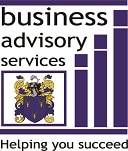When the Government announced in the May 2010 Budget that Goods & Services Tax (GST) will increase, with effect from 1 October 2010, it probably seemed a long way off to you then.
But with that date fast approaching, you’ll hopefully have begun to consider the impact that it will have on your business. These changes will affect your business and you’ll need to take action to ensure that you are prepared for them.
The GST rate will increase 2.5% to 15.0% for all goods and services supplied on or after 1 October 2010. Generally, there are no transitional provisions and all businesses should apply the new rate to goods supplied and services performed on or after October 1 2010.
Filing your GST return
If you file GST returns monthly, 2-monthly or 6 monthly and your GST period ends on 30 September 2010, you’ll need to file your return as normal, accounting for GST at 12.5%.
If you file GST every 2 or 6 months and the period straddles 1 October 2010, the IRD will send you 2 GST transitional returns – one covering the period ending 30 September 2010; and one covering the period commencing 1 October 2010.
Using the correct GST Rate
The correct GST rate that you must use will depend on what’s called the “time of supply”, which is the earlier of when payment for a supply of goods or service is made or the date an invoice is issued.
* If the time of supply happens before October 1 2010, you must use 12.5%. It does not matter if goods are delivered (or service performed) after 1 October
* If the time of supply happens after 1 October, you must use 15.0%.
Payments based adjustments
If you account for GST on a payments/cash basis or hybrid basis, you must use the new 15.0% GST rate for payments you make and monies you receive after 1 October 2010. To accommodate the rate increase, you’ll need to make an adjustment in your GST return that covers the September 2010 period.
* If you file monthly, 2 monthly or 6 monthly and the period ends on 30 September 2010, you will do this in your normal return for that period
* If you file every 2 months or 6 months and the period spans 1 October 2010, you’ll do this in your transitional return.
The following examples may help:
Example 1:
You account for GST on a payments/cash basis and your payment terms are 14 days. On 28 September 2010 you supply 100 widgets for $675.00, including GST. Your customer pays you on 10 October 2010.
Using the old 12.5% GST rate, you would have calculated $75.00 for the GST component. However, because you were paid after 1 October 2010, the GST component is actually $88.04 ($675.00 multiplied by 15/115).
Of course, if you weren’t allowed to make an adjustment, you’d have to pay the IRD an additional $13.04 ($88.04 less $75.00). You will be allowed to make an adjustment in your GST return for the period ended 30 September 2010 for the difference, so that you effectively pay only $75.00 GST on the sale.
Example 2:
Again, you account for GST on a payments/cash basis. Your GST return period ends on 30 September 2010. On 1 October 2010 you identify that you owe your creditors $9,200 and you are owed $6,750 from debtors.
The GST component of your creditors’ invoices is $1,022.22 ($9,000 multiplied by 12.5/112.5) under the old rate and $1,200.00 ($9,200 multiplied by 15/115) under the new rate – a difference of $177.78.
The GST component on the amount of your debtors’ balances invoices is $750.00 ($6,750 multiplied by 12.5/112.5) under the old rate and $880.43 ($6,750 multiplied by 15/115) under the new rate – a difference of $130.43.
In the above example, as your creditors’ balance exceed your debtors’ balance, you’ll need to account for an additional GST adjustment of $47.35 ($177.78 less $130.43) in box 9 on your 30 September 2010 GST return. If your debtors were larger than your creditors, you’d need to account for the difference in box 13 on your 30 September 2010 GST return.
Entertainment expenditure
You are obliged to make an adjustment for any non deductible entertainment expenditure, for income tax purposes. For GST purposes, any non-deductible entertainment expenses are considered to be supplied on the day that your income tax return is due or the date that it’s filed – whichever one is earlier, regardless of when you actually incurred the entertainment expense.
For the income tax year ended 31 March 2011, you may use the 12.5% GST rate for non-deductible entertainment expenses incurred prior to 1 October 2010 and the 15.0% rate for subsequent expenditure. Alternatively, you may use the 15.0% GST rate for the entire entertainment adjustment.
Inland Revenue Audit activity
During the Budget, the Government also announced that it has allocated the IRD an extra $113.9m to fund more audits. To ensure that you do not incur any unnecessary penalties and interest, I encourage you to thoroughly review your existing systems and processes to accommodate the GST rate change.
If you’d like to discuss any of the points covered in this article or discuss how the increase to 15.0% GST may impact your business, please don’t hesitate to contact us or visit www.ird.govt.nz/changes.
